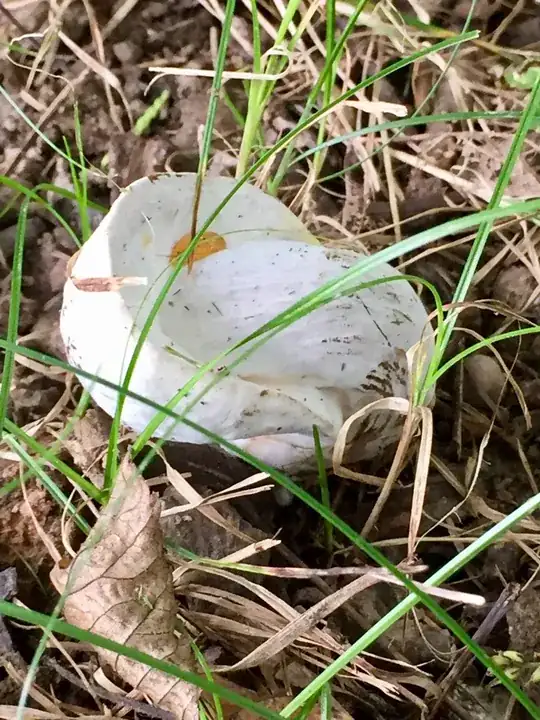White fungus with honey like globules seeping from it (https://i.stack.imgur.com/KpyxD.jpg)

- 21
- 1
-
Could it be giant puffball – user26819 Aug 26 '19 at 00:10
-
2That looks like a stem bent over itself with a cap opening "upside-down." I would guess not-puffball. The lack of gills under the cap narrows the candidates some, too. I would NOT venture to ID off of 2 photos of what is likely an atypical example of a mushroom. – That Idiot Aug 26 '19 at 13:24
1 Answers
Definitely not a puff ball of any sort.
What That Idiot said in the comments, plus:
I think what you've got there is a mushroom that has been parasitized by another fungus. I'm basing this off of the distorted shape of the mushroom (upside down cap) and the relatively consistent texture and color across all surfaces. Probably some sort of parasitic ascomycete and to take a wild guess, possibly Hypomyces chrysospermus, commonly called bolete mould.

Copypasta from MushroomExpert.com:
This "bolete mold" is widely distributed in North America (and the world, for that matter); many mushroom hunters in search of edible boletes have found Hypomyces chrysospermus attacking their quarry. The fungus begins on the mushroom's pore surface as a white, powdery mold, but it quickly spreads across the mushroom, sometimes engulfing it entirely and distorting it into something nearly unrecognizable. When mature, Hypomyces chrysospermus turns from white to golden yellow--and eventually becomes reddish brown (though neither the mushroom nor the mold is very often seen in this last stage, since decay has set in).
A couple more observations on your photos:
- The stem shows some signs of having a fibrous texture, this is typical of some boletes (although many other non-boletes too). It is hard to say for sure of course due to the parasitic covering.
- Both of your photos show a liquid yellow metabolite / exudate on the mushroom. I couldn't find anything about this occurring on H. chrysospermus, but maybe that will help someone else. I did find this photo though.
Note that my answer is not intended to be a definitive identification. For a positive ID, microscopic inspection would be needed. What you do know for certain is that this is some sort of parasatized mushroom & that regardless of what type of mushroom it started its life out as, it should not be considered edible.
- 1,760
- 1
- 12
- 21